Image: Everyday we get (and need) a snack halfway through the four-hour class. Here we were treated to a warm, fresh tostada.
seis dia (el miercoles, primero de febrero)
Not sure what woke me up at 3 am but I couldn’t get back to sleep. Fireworks beat the roosters to a wake up call at 4:14 am (although I was already awake). I was beginning to feel a little bad for the roosters losing their sense of place by being upstaged by human intervention twice in a few days. But the neighbouring rooster remained unperturbed and crowed proudly around 5:30 am. I read into his pride as, “Don’t worry; at least I am not a chicken.”
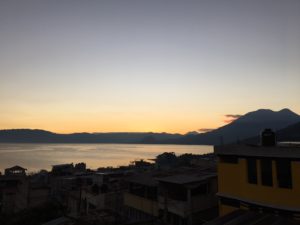
A view from our window just before sunrise
Early morning studying, chai and yoga preceded another lovely visit with our host before we rushed down the rickety stone staircase shortcut to our school. I walk in a little low – partly from being up early and partly because I realize I have just two more dia (days) to aprendo (learn) espanol and I haven’t made enough progreso. I am able to communicate that to my teacher in espanol when I respond to his morning Como estas? with just bien (good) instead of muy bien (very good). He tells that it takes a month of spanish classes to be proficient in the language. My diligence and enthusiasm wanes halfway through the class. We work through days and months. My interest picks up after he makes me work on some exercises. I finish them and ask “Ahora que?” (Now what?). Mi maestro responds, “Es exigentes.” (You are demanding.) He smiles and tries to soften the comment with “But you are a diligent student.” We go on to nouns, articles and possessives. There are so many rules! I guess the same holds for English but when you absorb the reglas over time, it is not so overwhelming.
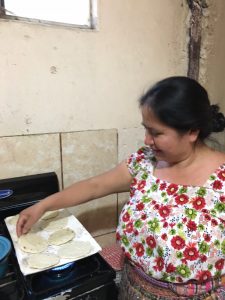
Alejandra makes us fresh tortillas everyday
At 6 pm, we go back to school to watch a pelicula (movie) called Sipakapa on the gold mining by Canadian-American owned company Montana Exploration. The movie documents indigeneous people in many communities around the mine, organizing to tell their municipal government and then their national government to stop the mining for fear that the sodium cyanide used in mining will slowly kill people and deplete the water available for personal and farm use. It was an amazing documentation of people coming together to convey their concerns in a peaceful way. But the movie ended there with no explanation of what happened next! We were encouraged to ask our teachers questions the next day.
After lunch I go with Laurel to take pictures of student and teacher and glance around her maestra’s place. Maria’s extended family had a small yard with 3 teathered chickens, a 4×4 foot herb garden, a small area to process mais (corn) and a wood pile for an outdoor cook stove. The kitchen and dining area have one open wall each and look into the yard. The bedrooms however were enclosed. The houses in the area don’t seem to have big yards and they almost always share a wall. After three hours, Laurel returns from her last weaving class with a big smile and a finished bufanda (scarf). She is quick to point out that Maria helped her with ending it.
I am getting a few responses to my blogs and a little worried if I shared too much online. I don’t make the comments public. Treat them more like emails to me!
I write out some of the new words I have learned and glad to hit the sack by 10 pm.

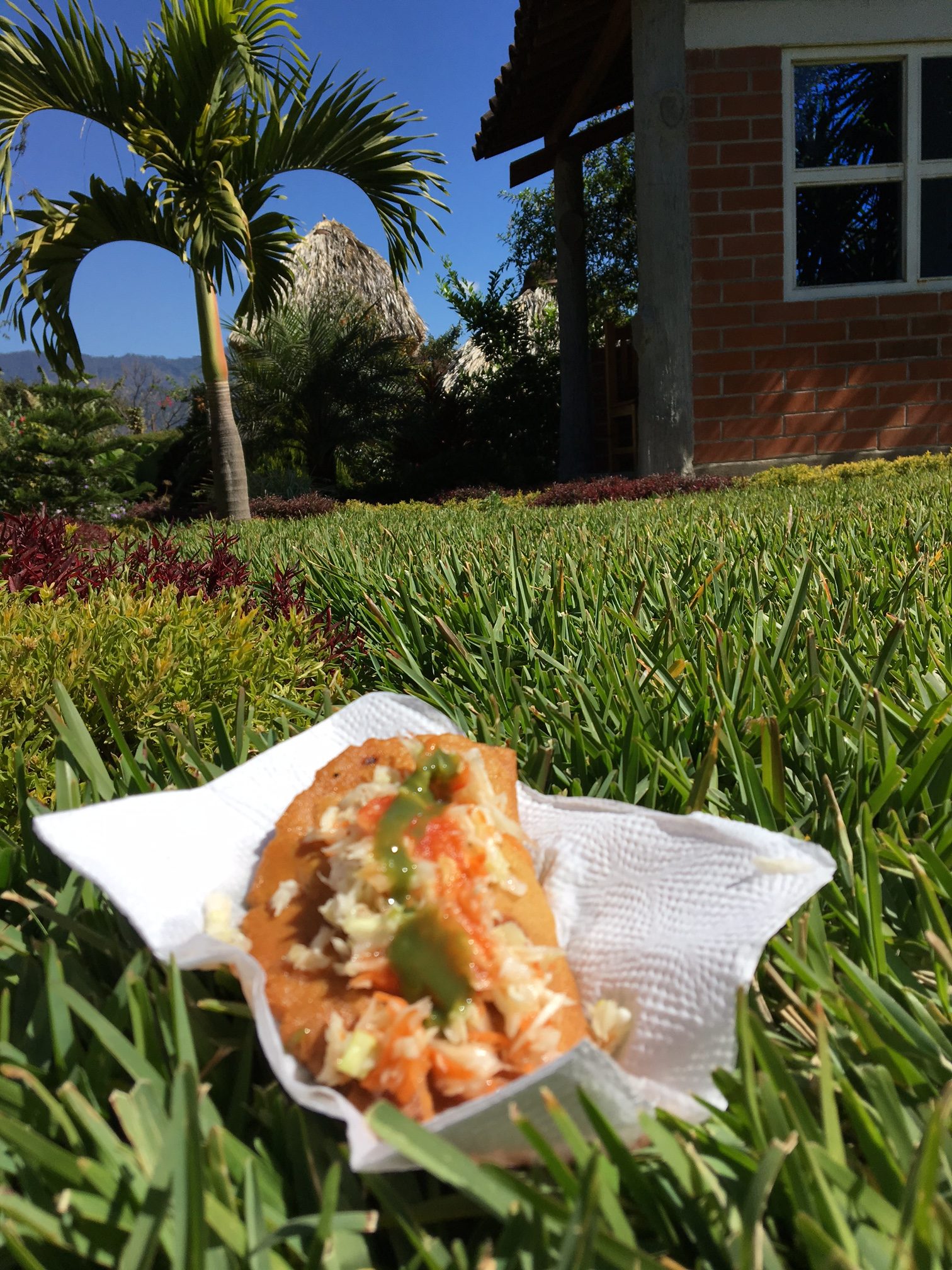
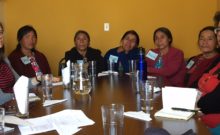
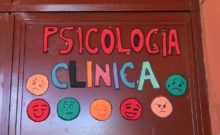
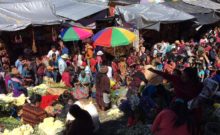

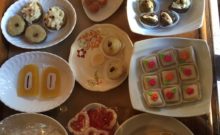
Therese McKirdy
February 27, 2017 6:59 amI am absolutely enjoying every word of your blog…I feel like I have been transported….well done!